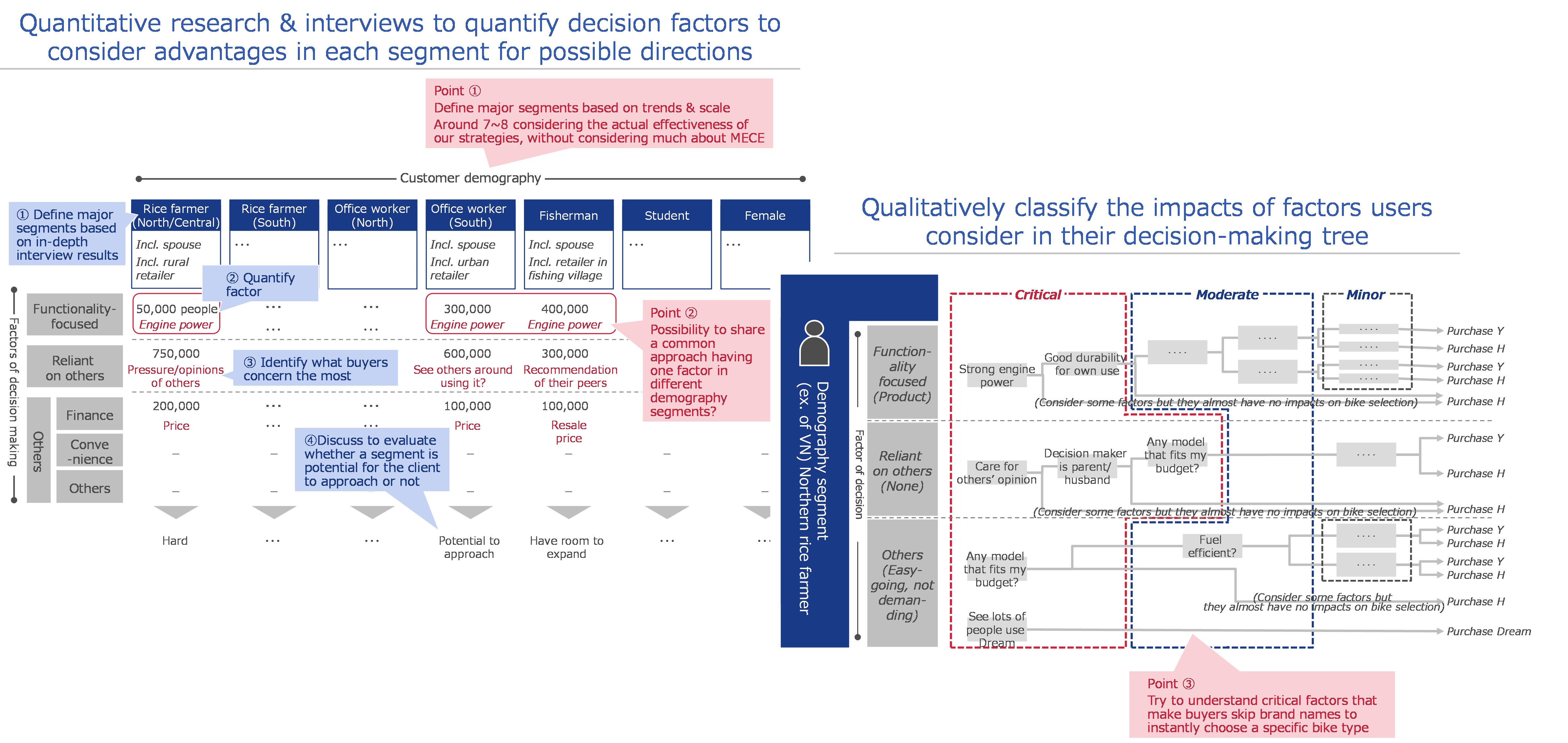
DI supported a global shipping line company in Vietnam, Cambodia, Myanmar
A global shipping carrier, having solidified its presence across the logistics value chain, sought to expand its operations in Vietnam, Cambodia, and Myanmar.
DI supported a global motorbike company in Southeast Asia
• Client: a global motorbike company
• Country: Southeast Asia
• Industry: Mobility
Background:
A global motorbike manufacturer observed a shift in consumer behavior as motorbike markets in Vietnam, Thailand, and Indonesia matured and became commoditized. While the company historically focused on improving manufacturing processes to address dissatisfaction points, they recognized a potential untapped segment of consumers driven by emotional or impulsive decisions. These consumers reportedly make purchases “just because they feel like it,” often influenced by others’ recommendations, and finalize decisions within a week.
To capitalize on this trend, the client sought to understand the broader changes in market dynamics and consumer decision-making. DI was engaged to conduct strategic market research and consumer interviews to uncover the underlying purchase decision structure segmented by market. The goal was to provide a comprehensive understanding of evolving market behaviors and propose actionable strategies to guide the development of a mid-term business plan targeting Vietnam, Thailand, and Indonesia, aligned with the client’s vision for growth.
Support overview:
DI’s scope of work involved a structured approach to analyze and address the client’s challenges. Key activities included:
Strategic Market Research: DI conducted in-depth research to examine the evolution of motorbike markets in Vietnam, Thailand, and Indonesia. This included studying industry trends, consumer demographics, and the impact of market maturity on purchasing behaviors.
Consumer Behavior Analysis: Through detailed interviews and surveys, DI gathered insights into the purchase decision-making process of different consumer segments. Emphasis was placed on understanding the impulsive/emotion-driven segment, exploring their motivations, influences, and behaviors.
Decision-Making Structure Mapping: DI drew a comprehensive big picture of the purchase decision-making process, identifying key drivers, barriers, and the influence of peer recommendations on purchase outcomes.
Segmentation Strategy: DI developed a clear segmentation framework to distinguish between consumer types, enabling the client to target each segment effectively.
Strategic Recommendations: Based on the findings, DI proposed actionable strategies for market positioning, product differentiation, and consumer engagement. These recommendations served as a foundation for crafting a mid-term business plan tailored to the specific dynamics of each target market.
DI’s deliverables enabled the client to reimagine their approach to evolving consumer needs, ensuring sustainable growth in competitive markets.
Image: excerpt from DI’s analysis in the project


A global shipping carrier, having solidified its presence across the logistics value chain, sought to expand its operations in Vietnam, Cambodia, and Myanmar.

A leading Japanese transportation company explored prospective business development and capital investment opportunities in Vietnam, targeting both B2B and B2C transportation segments. The B2B segment focused on traditional services for domestic manufacturing, distribution, and retail activities, while the B2C segment concentrated on the rapidly growing e-commerce market.

A client exploring the auto-lending market in Vietnam faced a significant challenge: the absence of a reliable credit rating system, which prolonged screening processes and increased the risk of ineffective decision-making. These inefficiencies created barriers to market growth and constrained the ability of lenders to extend loans confidently.

In 2022, the IEA published An Energy Sector Roadmap to Net Zero Emissions in Indonesia. This strategy emphasizes the critical role of low-carbon and carbon-free energy sources, such as hydrogen and ammonia, in achieving carbon neutrality by 2060. It envisions that the development of a hydrogen-based society in Indonesia will significantly contribute to the decarbonization of the global energy system.
L7-11, 7th Floor, Vincom Center, 72 Le Thanh Ton Street, District 1, HCMC, Vietnam
info.vn@dreamincubator.com.vn
+84 28 3827 8450